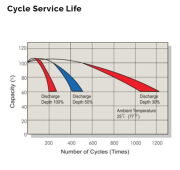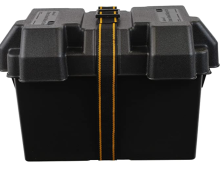sunshine_eggo
Happy Breffast!
Thanks for all that!
Was that a permanent loss, or just until the cells were re-balanced?
It took a week holding the battery at 14.2V. I don't remember the final results, but at that point, it was running 93Ah.
I was wondering about this when I started the project and was hoping that LFP would be better "all around"
Now I'm curious... which is "worse" or "better" and to what degree?
- LFP maintained at 14.4?
Bad. Will damage the cells.
- LFP maintained at something else between 13.5 and 14.4?
13.8V is a possibility. That's an average of 3.45V/cell, and that's usually where a BMS will start balancing. It's not great for them, but it's way way way better than 14.4.
People talk about "degradation" etc., but it's hard to really quantify the risk/return. Are we talking: "Battery will perm. lose 50% of capacity in 1 year if done this way!" or "Battery will lose 20% capacity if done this way for 5+ years"
10-20% in hot conditions per year is absolutely possible. In a temp controlled comfortable room, maybe 1-3%/year. Down at 50°F, expect it's hard to measure.
Reminds me of when an arborist came by to warn me not to trim an oak tree a specific way. He said: "It will shorten it's life! Don't do it!!"
I asked: "Ok, but to what degree? Can you quantify that for me?" His reply: "Well, it would usually live for about 400 years, but if you do that, it might only live 200!!!"
Ya, I trimmed the tree
LOL
As mentioned before, it's tied more to temperature.
Hmm... after reading your comments @sunshine_eggo and watching this video, I'm wondering if this Renogy Deep Cycle AGM Battery 12 Volt 100Ah battery would be a better fit? (On sale at Walmart for $189).
I guess even if only discharged down to 50%, it *should* still give Grandpa 3 solid-nights of CPAP.
IMHO, I would not hesitate to go to 20% on an AGM. You'll get 300+ cycles like that. Time will kill it before capacity loss.
...and this would 100% get me around the issues with balancing, maintenance, etc?
I'd just have to figure out the float-voltage on the battery... which the listing states: "Float Charging Voltage: 13.5V~13.8V "
IMHO, 13.8V is needed to truly get the battery back to 100% in a reasonable time frame (24 hours after 13.8V is hit).








